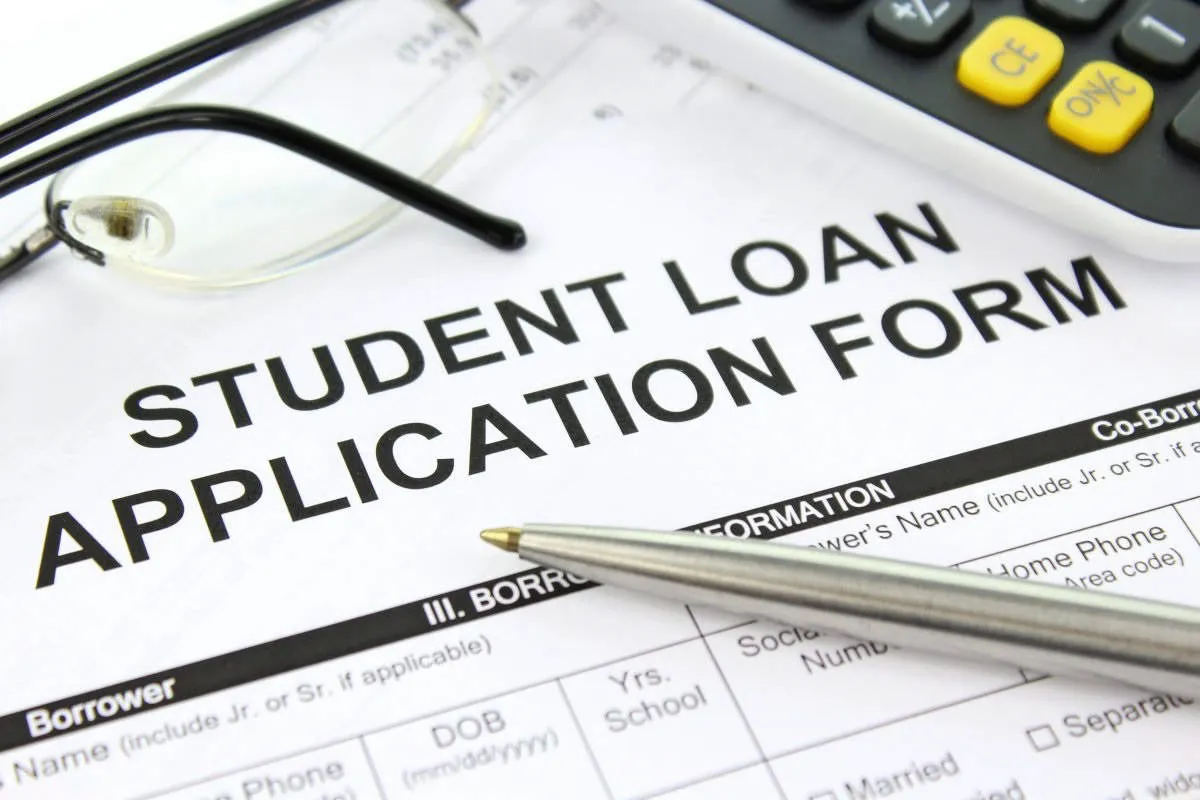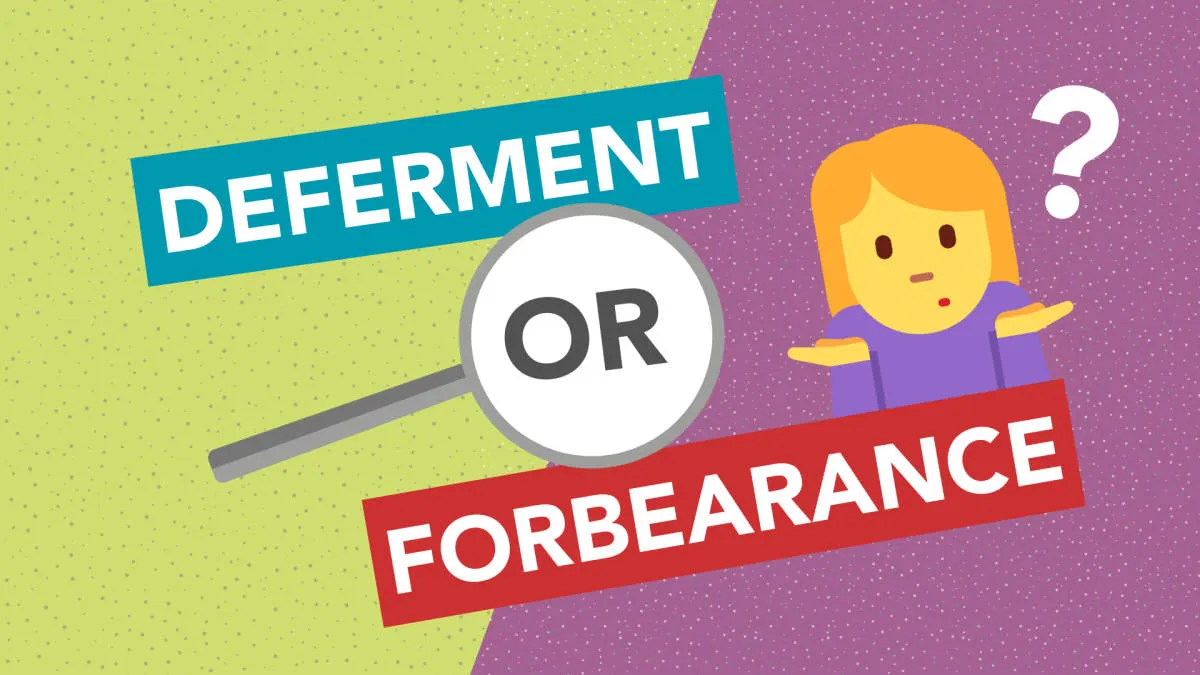Student loan debt is a pressing issue affecting many individuals, with financial implications that can last for years. Exploring strategies for understanding and managing student loan debt is crucial for students and graduates to navigate their financial futures effectively.
Types of Student Loans
Navigating the world of student loans can feel overwhelming. Before you start comparing interest rates and repayment plans, it’s crucial to understand the different types of student loans available. This knowledge will empower you to make informed borrowing decisions aligned with your financial circumstances and educational goals.
Federal Student Loans
Federal student loans are funded by the U.S. government and generally offer more borrower-friendly terms compared to private loans. They often come with benefits like fixed interest rates, income-driven repayment plans, and potential loan forgiveness options.
- Direct Subsidized Loans: Available to undergraduate students with demonstrated financial need. The government covers interest accrued while you are in school at least half-time.
- Direct Unsubsidized Loans: Available to undergraduate and graduate students; financial need is not a requirement. Interest accrues from the date the loan is disbursed, regardless of enrollment status.
- Direct PLUS Loans: Available to graduate or professional students, as well as parents of dependent undergraduate students. These loans typically have higher interest rates than Direct Subsidized and Unsubsidized Loans and require a credit check.
Private Student Loans
Private student loans are offered by banks, credit unions, and other financial institutions. While they can help bridge the gap when federal loan options are exhausted, it’s essential to carefully consider their terms and conditions.
- Interest Rates: Private loans usually have variable interest rates, meaning they can fluctuate over the life of the loan, potentially increasing your overall debt burden.
- Eligibility Requirements: Private lenders typically have stricter eligibility criteria and may require a co-signer, especially for borrowers with limited credit history.
- Repayment Options: Private loans generally offer fewer repayment options and may not have the same income-driven repayment or loan forgiveness programs available with federal loans.
How to Apply for Student Loans

Navigating the world of student loans can feel overwhelming, but understanding the application process can make it less daunting. Here’s a step-by-step guide on how to apply for student loans:
1. Fill out the FAFSA
The Free Application for Federal Student Aid (FAFSA) is the starting point for all federal student aid, including loans, grants, and work-study programs. You can fill out the FAFSA online at the official website (fafsa.gov). You’ll need your Social Security number, driver’s license (if applicable), tax information, and information about your assets and any aid you’re already receiving.
2. Review Your Student Aid Report (SAR)
After submitting your FAFSA, you’ll receive a Student Aid Report (SAR). This document outlines your eligibility for various types of federal aid, including loans. Carefully review this report to understand your options and the amount of aid you qualify for.
3. Compare Loan Offers
Your SAR will include information about federal loan offers. You are not obligated to accept all the aid offered. Compare the loan amounts, interest rates, and repayment terms of each offer. If you need additional funds beyond federal loans, you can explore private student loans from banks or credit unions. Remember, private loans usually have different interest rates and repayment options.
4. Choose Your Loans
Select the loans that best meet your financial needs. Prioritize subsidized federal loans over unsubsidized loans or private loans, as subsidized loans offer more favorable terms. You can accept some loan offers and decline others.
5. Complete Loan Counseling
For first-time borrowers of federal student loans, you’ll need to complete entrance counseling. This counseling helps you understand your loan obligations, repayment options, and the impact of borrowing. It’s an important step in making informed decisions about your student loans.
6. Sign Your Master Promissory Note (MPN)
Before receiving your loan funds, you must sign a Master Promissory Note (MPN). This document is a legally binding agreement outlining your promise to repay your loans. Carefully review the terms and conditions of the MPN before signing.
7. Stay Informed and Manage Your Loans
After receiving your loan funds, it’s crucial to stay informed about your loans. Keep track of your loan balances, interest rates, and repayment terms. Familiarize yourself with different repayment plans, and contact your loan servicer if you encounter any financial difficulties or have questions about your loans.
Repayment Options for Student Loans
Navigating the world of student loan repayment can feel overwhelming. Fortunately, there are several repayment options designed to make the process manageable and tailored to your financial situation. Understanding these options is key to successfully managing your debt.
1. Standard Repayment
This plan sets you up with fixed monthly payments over a 10-year period. While this results in the least amount of interest paid over the life of the loan, it may lead to higher monthly payments.
2. Graduated Repayment
Ideal for graduates anticipating an increase in income over time, this plan starts with lower monthly payments that gradually increase every two years. While you’ll pay more interest overall compared to the Standard Repayment, it provides a manageable starting point as you launch your career.
3. Extended Repayment
If you need a longer timeframe to repay your loans, this plan allows for repayment over 25 years. Keep in mind, opting for a longer repayment period will result in paying more interest overall.
4. Income-Driven Repayment (IDR) Plans
IDR plans offer a safety net by capping your monthly payments based on your income and family size. These plans are particularly beneficial for borrowers facing financial hardship or those pursuing careers with lower starting salaries. Several IDR plans exist, each with specific eligibility requirements and terms, so careful research is crucial to find the best fit.
Types of IDR Plans:
- Income-Based Repayment (IBR)
- Pay As You Earn (PAYE)
- Revised Pay As You Earn (REPAYE)
- Income-Contingent Repayment (ICR)
5. Loan Forgiveness & Cancellation Programs
Certain professions and circumstances may qualify you for loan forgiveness or cancellation programs. These programs typically require a specific number of years of qualifying employment or meeting other criteria. Examples include Public Service Loan Forgiveness (PSLF) for government and non-profit employees, Teacher Loan Forgiveness, and loan discharge due to disability. Researching these programs thoroughly is essential to determine eligibility and navigate the application process.
Tips for Managing Student Loan Debt

Navigating the world of student loan debt can feel overwhelming, but proactive management can simplify the process and set you up for financial success. Here are some valuable tips:
1. Understand Your Loans:
Before you can effectively manage your debt, you need a clear picture of what you owe. Compile a list of all your loans, noting the lender, interest rates, loan terms, and monthly payments. This information is crucial for making informed decisions about repayment.
2. Explore Repayment Plans:
Federal student loans typically offer various repayment options, including standard, graduated, extended, and income-driven plans. Research and compare these plans to determine which best aligns with your financial situation and goals. Don’t hesitate to contact your loan servicer to discuss your options.
3. Consider Loan Consolidation or Refinancing:
If you have multiple loans, consolidation can streamline your payments by combining them into a single loan. Refinancing involves replacing your existing loans with a new one, potentially securing a lower interest rate. Evaluate whether these options could save you money or simplify your repayment process.
4. Prioritize Extra Payments:
Even small additional payments towards your principal can significantly impact your overall loan cost. Consider allocating any unexpected income, such as tax refunds or bonuses, towards your debt. This strategy can help you pay off your loans faster and reduce the total interest accrued.
5. Automate Your Payments:
Setting up automatic payments ensures you never miss a due date, avoiding late fees and potential damage to your credit score. Many loan servicers offer interest rate discounts for enrolling in autopay, saving you money in the long run.
6. Seek Professional Guidance:
If you’re struggling to manage your student loan debt or need personalized advice, consider consulting a certified financial advisor. They can provide tailored guidance based on your circumstances, helping you explore repayment strategies, debt consolidation options, and potential loan forgiveness programs.
Refinancing Student Loans
Refinancing your student loans essentially means replacing one or more existing loans with a new one through a private lender. This new loan will ideally come with more favorable terms, such as a lower interest rate, potentially saving you money over the life of your loan.
When to Consider Refinancing
Refinancing can be a strategic move if:
- You have a good credit score: Lenders offering refinancing typically require a good credit history to secure competitive interest rates.
- Interest rates have dropped: If rates are lower than when you initially took out your loan, refinancing can save you significant money.
- You want to simplify your repayment: Consolidating multiple loans into a single new loan can streamline your monthly payments.
Potential Benefits of Refinancing
- Lower monthly payments: Securing a lower interest rate or extending your repayment term can reduce your monthly financial burden.
- Interest savings over time: A lower interest rate means you pay less interest overall, saving you potentially thousands of dollars over the life of your loan.
- Fixed interest rate option: Refinancing allows you to switch from a variable to a fixed interest rate, providing stability and predictable payments.
Factors to Consider Before Refinancing
- Losing federal loan benefits: Refinancing federal loans with a private lender means losing access to federal protections and repayment options, such as income-driven repayment plans or loan forgiveness programs.
- Potential fees and costs: Some lenders may charge origination fees or closing costs, so it’s crucial to factor those into your calculations.
Deferment and Forbearance Options

When facing financial hardship, it’s essential to understand all your options regarding student loan repayment. Deferment and forbearance are two such options that can provide temporary relief from monthly payments.
Deferment
A deferment allows you to temporarily postpone your loan payments for a specific period. During this time, you are not required to make any payments, and in some cases, interest may not accrue on your loans. You are eligible for deferment under certain circumstances, including:
- Enrollment in school at least half-time
- Unemployment
- Economic hardship
- Active military service
It’s important to note that eligibility criteria and deferment periods vary depending on the type of loan you have. For instance, subsidized loans may not accrue interest during deferment, while unsubsidized loans typically continue to accrue interest.
Forbearance
Forbearance also allows you to temporarily postpone or reduce your monthly payments. Unlike deferment, interest continues to accrue on both subsidized and unsubsidized loans during forbearance. You can request forbearance for a variety of reasons, including:
- Temporary financial difficulties
- Medical expenses
- Participation in a national service program like AmeriCorps
Forbearance is generally granted for a limited period, and you’ll need to provide documentation to support your request.
Impact of Student Loans on Credit
Student loans, like any form of debt, have a significant impact on your credit score and overall credit health. Understanding this relationship is crucial for managing your finances effectively both during and after your education.
Positive Impacts
Believe it or not, student loans can actually benefit your credit score, but this depends on responsible repayment:
- Building Credit History: Taking out student loans and making on-time payments helps you establish a positive credit history, a crucial factor in determining your creditworthiness.
- Credit Mix: Having a mix of credit types, including installment loans like student loans, can improve your credit score. It shows lenders you can manage different forms of debt responsibly.
Negative Impacts
While student loans can build credit, irresponsible management can negatively affect your score:
- Missed Payments: Late or missed payments on student loans are reported to credit bureaus, resulting in a lower credit score and potentially hindering your ability to secure loans or favorable interest rates in the future.
- High Debt-to-Income Ratio: A high student loan balance can increase your debt-to-income ratio (DTI), making it appear riskier for lenders to approve you for new credit, like a mortgage or car loan.
Paying Off Student Loans Faster
While adhering to your standard repayment plan is a good start, many borrowers seek ways to expedite the process of becoming debt-free. Here are some effective strategies to consider:
1. Make More Than the Minimum Payment
Even a small amount extra each month can make a significant difference in the long run. Consider increasing your monthly payment by a fixed sum or rounding up to the nearest $50.
2. Bi-Weekly Payments
Switching to bi-weekly payments essentially equates to making one extra payment per year, as there are 26 bi-weekly periods in a year. This can shave off interest and shorten your repayment term.
3. Utilize Windfalls
Direct unexpected income, such as tax refunds, bonuses, or inheritance money, towards your loan principal. These lump-sum payments can significantly chip away at your debt.
4. Refinance or Consolidate Your Loans
Explore options for refinancing or consolidating your loans to potentially secure a lower interest rate. This can lead to lower monthly payments or allow you to allocate more funds towards the principal.
5. Loan Forgiveness and Repayment Programs
Research whether you qualify for any loan forgiveness or repayment assistance programs. Some employers offer student loan repayment assistance as an employment benefit, while government programs exist for specific professions, such as teaching or public service.
6. Budgeting and Financial Planning
Creating a comprehensive budget is crucial to free up extra funds for loan repayment. Identify areas where you can cut back on expenses and redirect those savings towards your debt.
Conclusion
In conclusion, understanding student loan debt is crucial for effective management and financial planning to ensure a stable post-graduation future.
